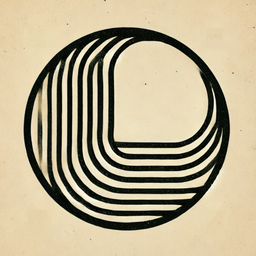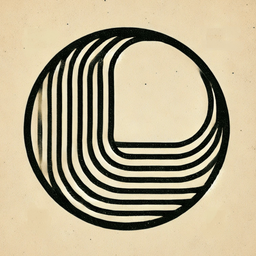A Complete Shadow Work Journal Guide for Anxious Attachment & Relationships
If you love deeply, attach quickly, or often feel “too much” in relationships, your shadow is already speaking. This guide shows how anxious attachment is shaped by unmet relational needs—and how a structured shadow work journal can help you understand triggers.

The Call to Look Within
If you love intensely, attach quickly, or feel a pit in your stomach when someone pulls away, you’ve already met your shadow—just not consciously.
People with anxious attachment often grow up learning one painful lesson:
“The parts of me that want closeness might scare people away.”
So you bury them.
- The longing for reassurance
- The anger at being overlooked
- The jealousy that feels unacceptable
- The fear of being replaced
- The need for clarity or consistency
- The desire to feel chosen
These emotions don’t disappear.
They retreat underground and become the relational shadow.
Jung described the shadow as the exiled parts of the psyche we hide to stay safe or loved.
In attachment psychology, these are the parts shaped by early experiences of:
- inconsistent caregiving
- unpredictable affection
- emotional unavailability
- conditional approval
- mixed signals
- chaotic or neglectful environments
Research from Mary Ainsworth’s Strange Situation and later attachment studies shows:
When love feels uncertain in childhood, the nervous system learns to amplify connection-seeking behaviors in adulthood.
What you call “clinginess” or “overreacting” is not irrational.
It’s intelligent survival: an internal alarm system trying to prevent emotional abandonment.
Jung wrote:
“One does not become enlightened by imagining figures of light, but by making the darkness conscious.”
For someone with anxious attachment, that “darkness” isn’t evil—
it’s the young, frightened, hopeful part of you terrified of being forgotten.
Your journal becomes the one place where you don’t have to hide.
Where you can meet that younger self with honesty, compassion, and clarity instead of shame.
What “Integration” Really Means in Attachment Work
Most advice for anxious attachment is behavioral:
“Don’t text first.” “Play it cool.” “Distract yourself.”
This doesn’t create security. It creates suppression.
True integration means working with the parts you’ve spent years overriding.
Here’s what that actually looks like:
1. Acceptance: Reducing Shame (the fuel of anxious attachment)
Research from Kristin Neff, Tara Brach, and self-compassion studies shows that shame keeps anxious attachment locked in place.
When you say:
- “Yes, a part of me fears being abandoned.”
- “Yes, I get triggered by inconsistency.”
- “Yes, I want closeness deeply.”
…you stop fighting your own biology.
Acceptance opens the door to change.
2. Curiosity: Understanding the Emotion Behind the Reaction
Studies on emotional granularity (Lisa Feldman Barrett) show that naming and exploring emotions improves regulation.
Ask:
- “What did I need in that moment?”
- “What did I fear losing?”
- “Which old wound did this trigger?”
- “What story did my mind jump to?”
Your anxiety is rarely about the present moment.
It’s an echo.
3. Action: Choosing Security, Not Survival Mode
Integration isn’t “stopping” your reactions; it’s responding consciously.
This means shifting from:
- Reacting → Pausing
- Clinging → Connecting
- Pleasing → Expressing
- Analyzing → Asking
- Spiraling → Grounding
- Chasing uncertainty → Choosing consistency
When you integrate your relational shadow—
the fear, the anger, the desire, the jealousy—you begin to:
- communicate instead of over-function
- self-regulate instead of overthinking
- choose partners who meet you consistently
- feel safe expressing needs
- stop reliving old abandonment patterns
Integration = the inner shift where secure attachment becomes possible.
How to Use a Shadow Work Journal (Attachment Version)
Attachment triggers are fast.
A journal helps you slow down your nervous system, identify patterns, and reconnect with reality.
Use this process:
Start Small
- 10–15 minutes
- same time daily (morning = clarity / evening = reflection)
- no editing
- always end with ONE relational micro-action
This consistency rewires your patterns faster than intensity.
Attachment Shadow Journal Template
1. A moment this week that triggered me:
Text delay, tone shift, mismatch of expectations, sudden distance, misunderstanding.
2. What story did I tell myself?
Common anxious attachment stories:
- “They’re losing interest.”
- “I did something wrong.”
- “They found someone else.”
- “They’re pulling away because of me.”
3. What hidden part of me responded?
This could be:
- the child who learned affection was conditional
- the teen who was ghosted, humiliated, replaced
- the adult who fears repeating a painful relational pattern
Research shows that attachment triggers often activate implicit memories, not conscious logic.
4. What need or fear is underneath?
Connection, clarity, reassurance, consistency, safety, respect.
Susan Johnson’s EFT research shows emotional needs are universal—not “needy.”
5. One small behavior I will try in the next 24 hours.
This could be:
- grounding before responding
- sending an honest but regulated message
- naming a boundary
- asking a clarifying question
- choosing space instead of scrolling for clues
- scheduling time for self-soothing
Why this works:
Studies on expressive writing (Pennebaker, Baikie & Wilhelm) show it reduces rumination and improves emotional clarity.
For anxiously attached individuals, this journaling structure helps shift the body from panic → perspective.
Five Core Practices for Attachment Healing (Shadow Edition)
1. Self-Compassion for the “Too Much” Parts
People with anxious attachment have a lifetime of being told:
“You’re too emotional.”
“You’re too sensitive.”
“You’re too intense.”
Self-compassion research shows that treating yourself with warmth reduces defensive patterns and helps regulate fear circuits in the brain.
Every time you write:
“I see you. I hear you. You make sense.”
…you weaken the shame at the heart of attachment anxiety.
2. Mindful Awareness During Triggers
When someone pulls away—or you think they did—your nervous system floods.
This is not overreaction.
It’s attachment activation, supported by decades of research in attachment neurobiology.
MBSR studies (Khoury et al.) show mindfulness helps regulate emotional overwhelm.
Practice:
- pause
- breathe
- name the sensation
- locate it in the body
- offer reassurance internally (“I’m safe right now”)
This turns spirals into signals.
3. Expressive Writing for Emotion Processing
Writing about your jealousy, fear, anger, and longing is not indulgent.
It’s emotional integration.
Pennebaker’s research shows expressive writing reduces emotional intensity and increases coherence in personal narratives—key for attachment healing.
4. Dialogue with Your Shadowed Attachment Parts
This is the most transformative technique.
When you dialogue with your anxious part, you shift from fighting it to nurturing it.
Attachment research shows that internal dialogue resembling secure caregiving increases emotional stability.
Write:
You: “What are you afraid of?”
Shadow: “Being forgotten.”
You: “When did you first feel that way?”
Shadow: “When…”
You: “What can I do to help you now?”
This is you reparenting the part that still believes love disappears without warning.
5. Feedback & Action (Where Real Repair Happens)
Insight ≠ Integration.
Healing happens through repetition.
After each journal session:
- send one honest message
- set a tiny boundary
- ask for clarification instead of assuming
- regulate before reacting
- reassure your own body
- choose partners who show consistency
- notice patterns in early dating
This teaches your nervous system that fear ≠ fact.
30 Shadow Work Journal Prompts for Anxious Attachment
A. Seeing Your Attachment Shadow
(Reflective, pattern-revealing)
- What behaviors in others trigger my abandonment fear? Why?
- What past relationship does this remind me of?
- What criticism do I fear the most? What truth does it touch?
- When do I over-function to maintain connection?
- Where do I silence my intuition to avoid conflict?
B. Anger, Envy & Emotional Honesty
(This is where most anxious attachers have a “shadow”)
- Who do I envy in relationships? What unmet need does that reveal?
- Where do I hide anger to stay likable?
- Where do I use niceness to avoid confrontation?
- When did I express desire cleanly—and how did it feel?
- What boundary was crossed the last time I felt rage?
C. Fear, Shame & Self-Abandonment
(Sources of the deepest relational shadow)
- What story do I tell to seem low-maintenance?
- When do I silence myself to keep someone close?
- Where do I abandon myself in dating?
- What secret am I afraid would make someone leave me?
- What part of me believes I must earn love?
D. Body, Anxiety & Regulation
(Where attachment wounds actually live)
- What sensations show up when I feel insecure?
- What physical cue tells me I’m spiraling?
- What ritual reliably calms me?
- What thought loops appear under stress? Are they fact or fear?
- If my anxiety could speak, what would it warn me about?
E. Integration & Secure Attachment
(Embodying your future self)
- What trait in me becomes a strength in a secure relationship?
- What need do I avoid naming? Script it.
- What relational role do I avoid—receiver, initiator, boundary-setter?
- Write from my securely attached future self: what habits did I practice?
- What act of self-respect can I do in 24 hours?
How to Know You’re Healing (Attachment Edition)
Real healing looks subtle before it looks dramatic.
You’re growing when you feel:
- less panic when someone doesn’t reply
- fewer stories spiraling in your mind
- more ability to pause instead of pursue
- comfort expressing needs
- guilt-free boundaries
- attraction to consistency, not chaos
- clarity about what you want
- less obsession with validation
- more peace after conflict
Healing is not the absence of triggers.
It’s your ability to choose your response.
Common Mistakes in Attachment Shadow Work
Mistake: Going too deep without taking action
Fix: 1 micro-action every session
Mistake: Treating the anxious part as an enemy
Fix: Treat it as the protector that kept you alive
Mistake: Endless venting
Fix: Time-box → insight → behavior shift
Mistake: Expecting instant security
Fix: Attachment rewiring happens through repetition, not breakthroughs
🌿 Shadow Work with Life Note: Built for Attachment Healing
Most tools help you vent.
Life Note helps you transform.
With Life Note, you can:
- Work with mentors modeled on Jung, Alan Watts, Esther Perel, Maya Angelou,. Guides who understand the psychology of connection, desire, wounds, and intimacy
- Choose styles: gentle reassurance or direct challenge. Mirroring the two sides of attachment healing: soothing & confronting.
- Track emotional patterns: jealousy, fear, abandonment, longin.g Your attachment shadows become visible instead of overwhelming.
- Receive reflections that reveal blind spots—not feed your fears
Life Note isn’t here to validate illusions.
It’s here to help you break patterns.
Shadow work isn’t about being “low maintenance.”
It’s about becoming emotionally honest, grounded, and securely attached.
Final Word
Integration isn’t becoming perfect—it’s becoming whole.
Every abandoned part you reclaim becomes fuel for a more stable, secure, loving you.
Tonight:
Open your journal. Write the truth you’ve avoided.
One page.
One pattern.
One act of self-respect.
That is how secure attachment begins.
Explore More






